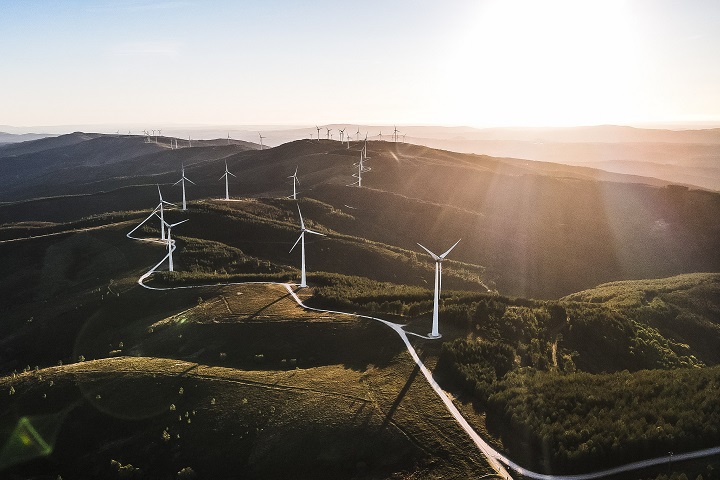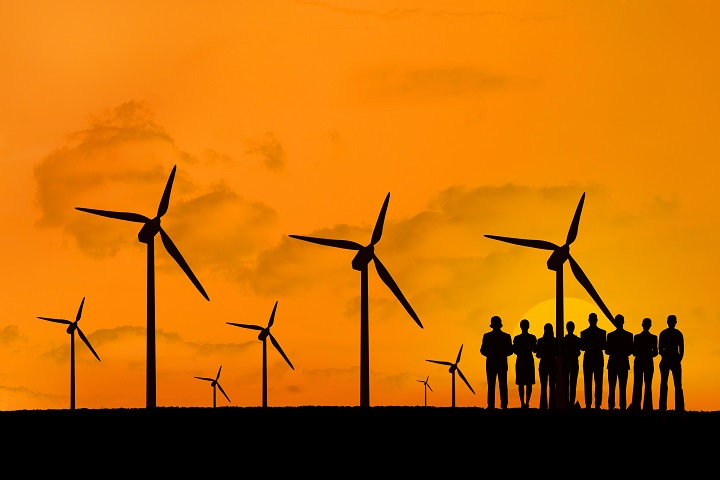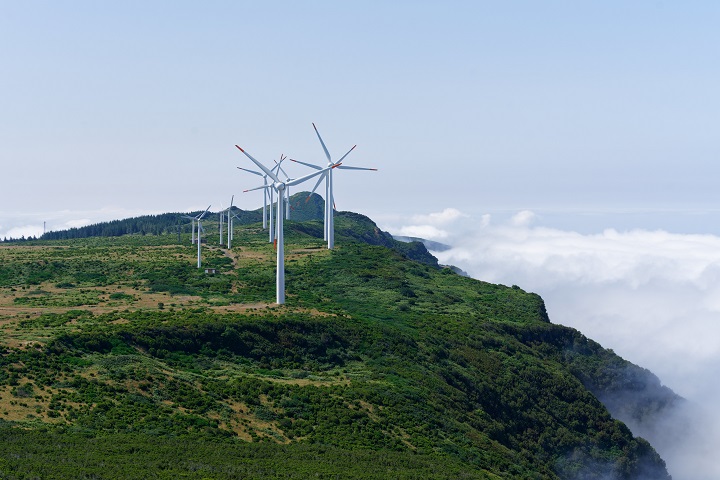The use of wind energy – relatively new – has been very beneficial over the last two decades, however the useful life of most wind turbines is 20 to 25 years and is now coming to an end. The question that triggers many debates is how to manage this waste without negatively impacting the environment? It is no secret that the renewable energy industry must take into consideration its waste in order to be consistent with the preservation and care of the environment that they promote so much.
First of all, it is important to define what a wind turbine is. It is a turbomachine that exchanges a quantity of motion with the wind, rotating a rotor that converts wind energy into rotating mechanics. A good design of the blade section ensures the rotation of the rotor. Depending on the orientation of the rotor axis, they are classified into vertical and horizontal turbines. Thus, there are windmills, wind pumps (pumping water) and wind turbines (generating electrical energy).
Other elements of wind turbines are the coupling or support system; the multiplier or gearbox; the generator; the yaw motor; the support mast; blades and anemometers, which determine the direction and measure the speed of the wind.
Today, large companies are competing to design the best turbines. In fact, GE Renewable Energy broke its own record (12 MW) with the creation of the world’s largest wind turbine prototype to date: Haliade-X installed in Rotterdam with a capacity to generate 14 MW and produce 74 GWh of energy annually. In terms of size, it is 260 meters high and 107 meters long. The first of these is expected to start operations at the Dogger Bank C offshore wind farm located 130 km off the northeast coast of England. For its part, the United States plans to deploy these wind turbines in 2023 at a wind farm located on an island in Massachusetts.

These milestones mark important advances in wind farm optimization and increased productivity at lower cost, making wind energy deployment more cost-effective and accessible worldwide.
For its part, China, as a power, participates in the race for supremacy and for that reason plans to build the most powerful wind farm on the planet with turbines more efficient than those of General Electric. The Chinese company in charge of this feat is MingYang Smart Energy, and its prototype that promises to occupy the number 1 step is called MySE 16.0-242. This turbomachine with a 16MW generator is estimated to generate 80 GWh of electricity each year. Its height measurement is 18 meters lower than GE’s but its performance is expected to supply 20,000 homes with electricity.
It should be noted that in this race to launch the best wind turbine the most important thing is not the size but the aerodynamics of the blades that determine its performance. According to the Chinese engineers at MingYang Smart Energy, they have managed to optimize performance by 45% thanks to a 19% increase in rotor diameter.
Spain is not lagging behind in engineering studies to propose innovative changes. The project entitled Vortex Bladeless, led by three entrepreneurs with the surnames Yañez, Suriol and Martín, claims to be 60% more effective than conventional wind turbines, produces less noise and takes up less space. This prototype consists of “a wind turbine formed by a vertical conical cylinder anchored to the ground by means of an elastic rod that, with the passage of air around it, oscillates and, thanks to a system of coils and magnets, allows the generation of electricity with that movement”. This design is simple and different from what is usually seen in the market and has several benefits, including a savings of 30% in terms of manufacturing, installation and maintenance costs, since it dispenses with gears, brakes, bearings and shafts. It does not require lubrication and has no parts that can wear out due to friction.

That said, it is exciting to think of a future with more efficient wind turbines. However, we cannot take our eyes off one reality: the waste they generate and the decisions that are made regarding their destination without losing focus of the initial objective: a greener and self-sustainable world. No one can ignore the fact that on several occasions photos of landfills full of wind turbine blades have gone viral in the United States, due to the fact that this component of the wind energy industry, because of its manufacturing materials, is the most difficult to treat.
In that sense, it is not surprising that wind energy has its detractors. One of them is the extreme right-wing French candidate Marine Le Pen, who in her political campaign has assured that she will dismantle wind farms and end subsidies to renewable energy if she becomes president of France in 2022. Le Pen is against wind and solar energy, and as a substitute for them she proposes to promote the construction of nuclear reactors.
In case your argument is the waste from the wind industry, it is an issue that is currently improving and a proof of this is that 85-90% of the materials of a wind turbine are recyclable. For example, Siemens Gamesa created the first 100% recyclable blades made of steel, cast iron, fiberglass, copper, aluminum and concrete.
In that order, there are three basic ways to manage the blades when they reach their final life cycle or when they are to be replaced by a more modern device:
Reuse: as spare parts for other operational wind turbines. In such a way that new parts are not manufactured but replaced. Another way to give them a new use is for architectural purposes, as in two very specific cases, such as the bicycle parking installed in Denmark and the bridge in the city of Aalborg.

Recycling: There are three types of recycling. First, there is thermal recycling, whereby wind turbines can be incinerated to generate energy. Another option is pyrolysis and gasification, whereby fibrous materials can be preserved for reuse. Then there is the mechanical one, which consists of shredding and/or separating the material for later reuse in the manufacture of other fibrous materials or as filler material, and finally chemical recycling.
Storage: Since the materials that make up wind turbines do not constitute hazardous or noxious waste; they can be stored in landfills without causing damage to the environment. However, some people are of the opinion that the mere occupation of the space, as the sizes of the wind turbines are quite large, is annoying and inconvenient.
In conclusion, it should be noted that companies are working to improve and end this disadvantage. It is no coincidence then that the global wind turbine supplier Vestas announced in 2020 the goal that by 2040 it will produce wind turbines without waste, i.e. 100% recyclable.

IC INTERNATIONAL GROUP
Copyright © 2024. Todos los derechos reservados
to save your favourite homes and more
Log in with emailDon't have an account? Sign up
Enter your email address and we will send you a link to change your password.
to save your favourite homes and more
Sign up with emailAlready have an account? Log in